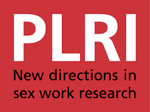International sporting events are increasing in frequency and magnitude. It is estimated that the FIFA World Cup brought close to 400 000 visitors to South Africa in 2010. Little research has been conducted into the demand and supply of paid sex during big sporting events and where the topic has been explored, the focus tends to fall on speculation around human trafficking for the purposes of sexual exploitation, rather than on adult, consensual sex work.
This research project aimed to:
• Assess if there is a change in the demand for or supply of paid sex during an international sporting event;
• Track the number of clients and potential changes in sex work activity during the World Cup;
• Assess sex worker fears, expectations and experiences of the 2010 FIFA World Cup; and
• Gather information on sex worker mobility, frequency of health care visits, access to services, vulnerability to HIV, interactions with healthcare providers and interaction with police.
The research project comprised of two components: a website component and a mixed-methods component. In the website component, we conducted a three-wave telephonic survey of female sex workers in the last weeks of May (pre-World Cup), June (during the World Cup) and July (post-World Cup) 2010. A sampling frame was constructed, by listing all sex worker profiles published on www.sextrader.co.za – a website with national coverage, containing over 1000 profiles of sex workers. Additionally, we listed sex worker profiles published in the adult section of the Classifieds in local newspapers in the greater Johannesburg, Durban and Cape Town areas, through the website www.iol.co.za. In each wave, after discarding duplicate profiles, random number tables were used to select sex workers, who were then telephonically contacted until at least 220 respondents had accepted to participate in the study. Exclusion criteria were insufficient English language skills to understand or answer the questions, and being a male or transsexual sex worker. Participants were asked about their age; country of origin; current work area; number of clients in the past seven days; country of origin of their last client; and condom use with their last client.
The mixed-methods component of the research project employed several research techniques and included the surveying of more than 2000 sex workers in Hillbrow, Sandton, Rustenburg and Cape Town. It tracked the changes in the sex industry over the period of May – September 2010 and explored sex worker experiences of the World Cup. It specifically investigated whether there were changes in the demand and supply of paid sex in these four research sites.
A cadre of sex workers were trained as fieldworkers and ten fieldworkers per site were selected to conduct the research. Fieldworkers administered surveys to sex workers at three points in time – Phase 1: Pre-World Cup period; Phase 2: During the World Cup; and Phase 3: Post-World Cup period. In addition, between 10–20 sex workers each in Cape Town, Rustenburg and Hillbrow were invited to participate in Focus Group Discussions (FGD) and a “Diary Project” during the three points in time. Participants tracked their sex work transactions, number of clients, and interactions with the police and health care during the four-month period around the World Cup.
Findings:
• During the 2010 World Cup period, there was a small increase in the number of female sex workers who advertised online and in newspapers.
• Less non-South African sex workers advertised in newspapers and online than expected.
• There were not significantly more clients seen per sex worker during the World Cup period.
• A proportion of the local clients of sex workers who advertise in newspapers may have been temporarily replaced by foreign clients during the Soccer World Cup.
• Reported condom use was high, at 99%.
• Sex workers’ demographics did not change significantly during the World Cup period, indicating no major influx of young sex workers, for example. Demand and supply of sex work remained constant across the World Cup period. Our data also does not support fears about an increase of children or foreign migrant sex workers into the sex industry during the World Cup period.
• Health care contact with sex workers generally decreased during the World Cup period at a time where the increased resources presented an opportunity for health care expansion.
• Dedicated sex work-specific health care services and increased access to female condoms could address some of sex worker vulnerability to ill-health and HIV.
• Police contact with sex workers remained high and included police brutality, corruption and harassment.
(Summary authors’ own)


